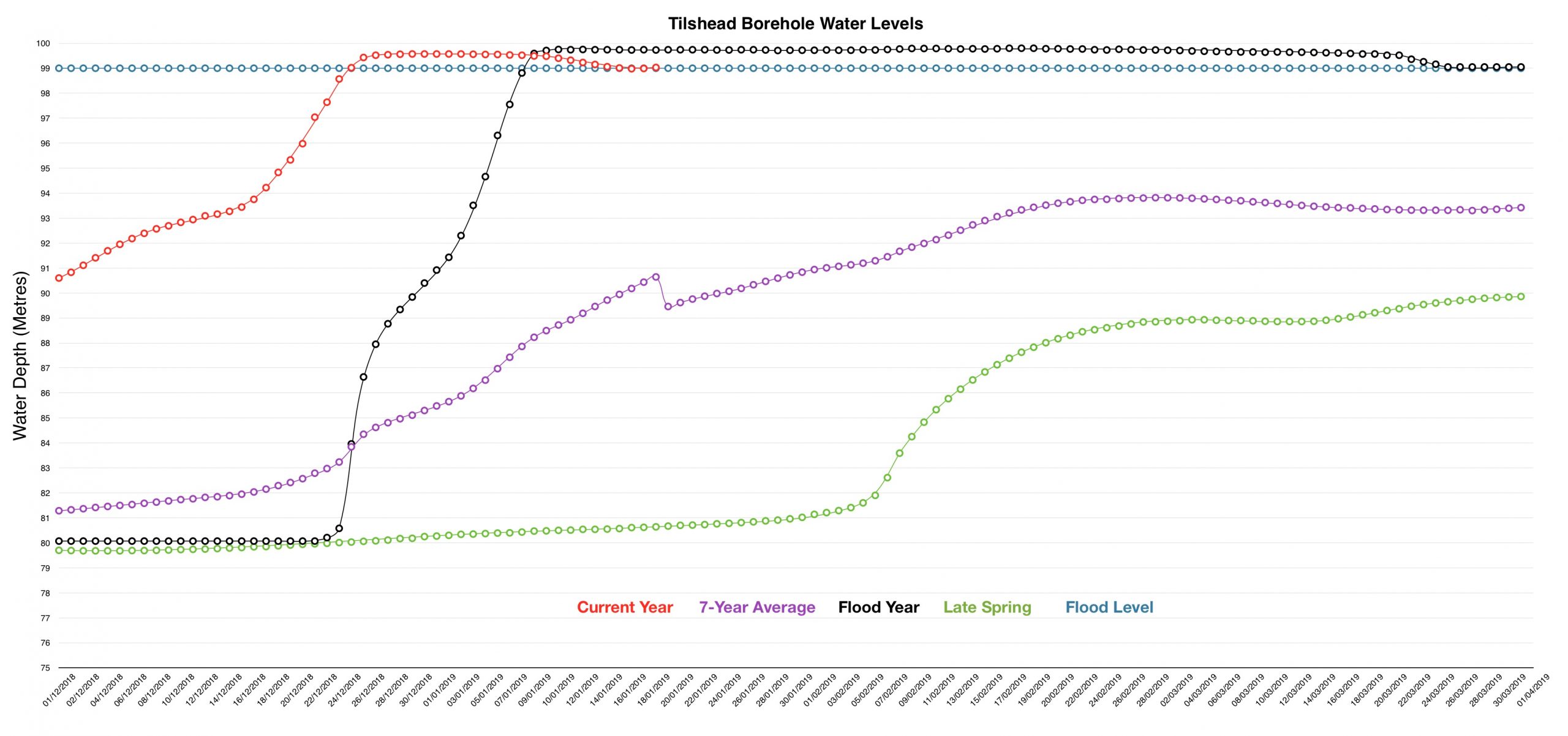Water levels in the River Till and in the Tilshead borehole fell steadily over last weekend and throughout most of the week. However, the moderately heavy rain from the early part of the week through to the middle slowed the rate at which the borehole level fell. That meant the level didn’t fall below the 99.00m AOD flood level until Thursday instead of Wednesday which I thought might be the case. The water level bottomed out at mid-day on Friday and since then has been rising slowly. Similar things have probably been happening at other boreholes on Salisbury Plain which might account for the fact the Environment Agency’s groundwater Flood Alert remains in force as of 10:00 today; although that status has not been updated since Wednesday of last week.

I can’t tell you how much rain actually fell in the village last week as Janet Abbot’s rain gauge, which has done such sterling service over many years providing data for Janet’s weather website, appears to have a terminal fault. Although it is generating numbers, they seem to be random and Janet thinks the rain gauge has a “faulty see-saw”; who knew rain gauges kept themselves entertained! Hopefully, it will soon be sorted out, as the data it provides is very useful. In seeking an alternative, I found a rainfall gauge that was giving out data, of sorts, for Larkhill. Unfortunately, it didn’t give 24-hour cumulative totals, so it wasn’t particularly useful, but it did express the rainfall in different units to Janet’s, which got me thinking. Janet’s gauge gives an area independent depth of rainfall in millimetres whereas the Larkhill gauge expresses the rain measurement as litres per square metre. Of course 1mm of rain equates to 1 litre per square metre and on Wednesday we had a 12 hour period where 12 litres of rain per square metre fell; or 12 mm. Now 12mm of rain falling on Salisbury Plain doesn’t sound a lot, but what does that mean in volumetric terms?
Well, the online version of Encyclopedia Brittanica gives the area of Salisbury Plain as 775 sq km and that equates to 775,000,000 sq m of ground and 12 litres of rain fell on each one of those. That means a total of 9.3 billion litres of rain. I don’t know about you, but I can’t get my head around big numbers like that. Is 9.3 million cubic metres of rain any better? How about it being the rough equivalent of 93,000 Blue Whales being dropped on Salisbury Plain – and none of us heard a thing! Maybe 37,200 Olympic swimming pools worth of water then?
Enough nonsense, what about the week ahead. It seems we are going to be in the grip of the highest high-pressure system ever recorded in the UK, which is going to divert all the wet Atlantic weather to our north. That suggests the next week and possibly the next two weeks will remain largely dry, with any precipitation, including snow, being to the north of us. There is little rain in prospect until the middle of February, which bodes well for water levels which should start to fall again in the next couple of days. I would expect the Flood Alert to be lifted by the Environment Agency in the next few days.
